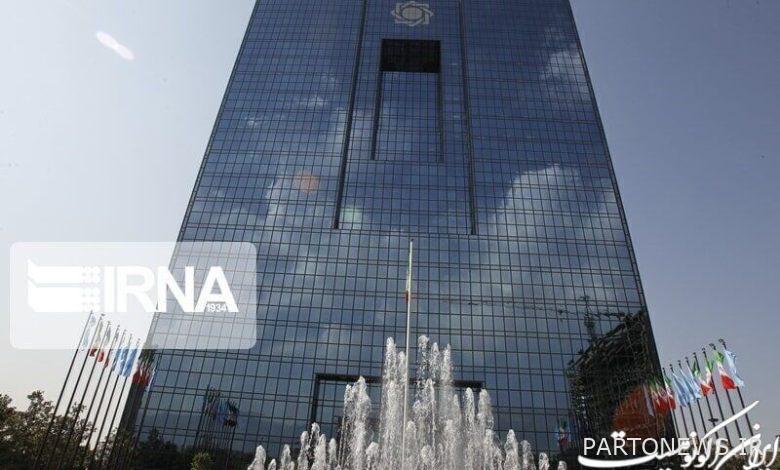Liquidity growth decreased by 4.1 percentage points compared to last year

According to the report of Iran Economist, the central bank, in response to the criticism of some media about the liquidity growth statistics, announced: With the beginning of the 13th government, the issue of inflation control was considered as one of the most important economic priorities of the government and the central bank, and in this regard, growth control Liquidity and monetary base were followed as two engines driving inflation in the agenda of the central government and yank, which after 10 months of the establishment of the 13th government, the decreasing trend of the growth of liquidity and monetary base indicates the effectiveness of these policies.
In regards to referring to liquidity passing 5 thousand thousand billion tomans, it is necessary to explain that what is important in controlling inflation is the growth trend of liquidity. The economic complex of the government and the central bank can take a positive direction in the context of the decreasing trend of the monetary base and liquidity, and as a result, the continuation of the decreasing trend of inflation.
Therefore, the nominal numbers and figures related to the increase in liquidity not only do not provide a correct picture of the economic reality, but also cause anxiety and worry in the minds of the audience.
Decreasing trend of liquidity and monetary base growth
The volume of the monetary base at the end of June has decreased compared to the figure at the end of May (28.4 thousand billion rials) and the monthly growth of the monetary base has also been negative in June this year (equivalent to -0.4 percent), as well as the growth of liquidity in the first quarter of this year. Compared to the same period last year, it has decreased by one percent.
Based on the selection of economic statistics of June 1401, the analysis of liquidity growth in this month indicated the continuation of the decreasing trend of this variable as in previous months. The volume of liquidity at the end of June 1401 reached the figure of 51049.6 thousand billion Rials, which shows a growth of 5.6% compared to the end of 1400, and compared to the growth of liquidity in the same period of the previous year (6.6%), 1.0 The percentage unit has decreased.
Also, liquidity in the twelve months ending at the end of June 1401 has grown by 37.8%, of which 2.5 percentage points are due to the increase in statistical coverage (the addition of information on Mehr Ektisad Bank in monetary statistics, due to the merger of banks belonging to the armed forces in the bank Sepeh) is related and if the increase in statistical coverage is not taken into account, the liquidity growth will decrease to 35.3% at the end of June 1401.
Therefore, the twelve-month growth of liquidity leading to the end of June 1401 (on a homogenous basis) compared to the growth of the same period of the previous year (39.4 percent), shows a decrease of 4.1 percentage points.
The role of liquidity management in strengthening economic growth and creating financial stability
It is also necessary to explain that in order to control the growth of liquidity and manage the money creation power of banks, the central bank in the 13th government has seriously followed the control of some growth of the balance sheets of banks and credit institutions.
It is clear that pursuing such a policy by the central bank will slow down the growth of banking facilities. Therefore, it is necessary for the monetary policy maker to take measures to optimally allocate and direct bank resources to economically productive sectors in order to maintain and strengthen economic growth and employment.
Therefore, it can be seen that the management of liquidity (the management of bank credits) does not only mean sprinkling money in the economy (supporting non-economic production) and pouring gasoline on the fire of inflation, but also the concept of optimal use of bank resources in accordance with the country’s economic priorities and within the framework It is an industrial development strategy that simultaneously restrains the growth of liquidity and manages the money creation of banks, production and employment are not harmed and ultimately the main goals of the central bank in controlling inflation and supporting economic growth are achieved.
It should be noted that due to the importance of the growth of production and employment in the country, credit management is a set of measures that are operational and implemented with the aim of directing financial resources towards productive sectors with added value and high productivity. In this mechanism, the direction of banking facilities towards productive economic sectors in compliance with the requirements and preconditions of this policy, in addition to helping to strengthen economic growth and its inclusiveness and sustainability, plays a significant role in reducing the vulnerability of the banking network and creating financial stability in the economy. It plays a big role.
The experiences of developing economies (especially emerging economies) as well as developed economies regarding the policy of credit management show that these countries pay attention to credit policies and direct resources to the priority sectors of the country in order to reach this level of development. And in this connection, its requirements and prerequisites, which are mainly; Formulation of industrial development strategy, establishment of trans-sector institution, adoption of appropriate tax policies to reduce speculative activities, extensive interaction with the world with the aim of transferring advanced technology have been provided.

